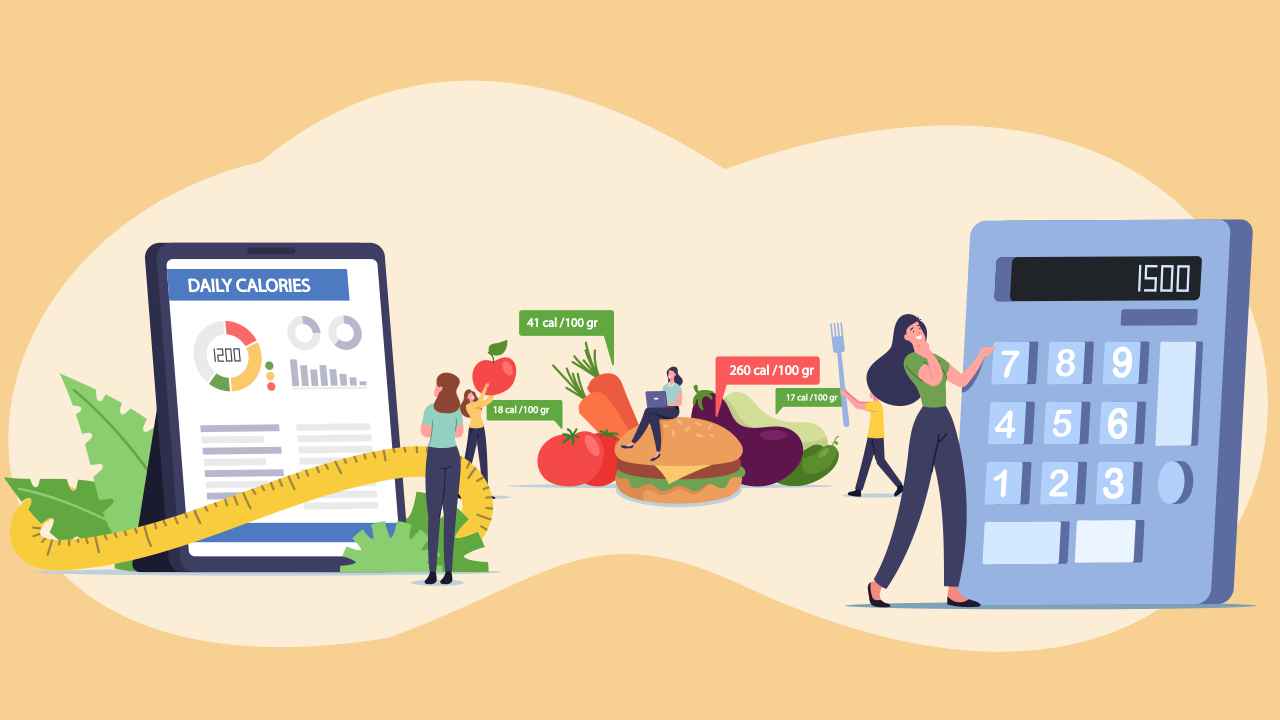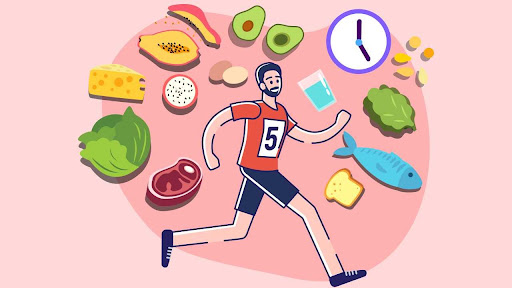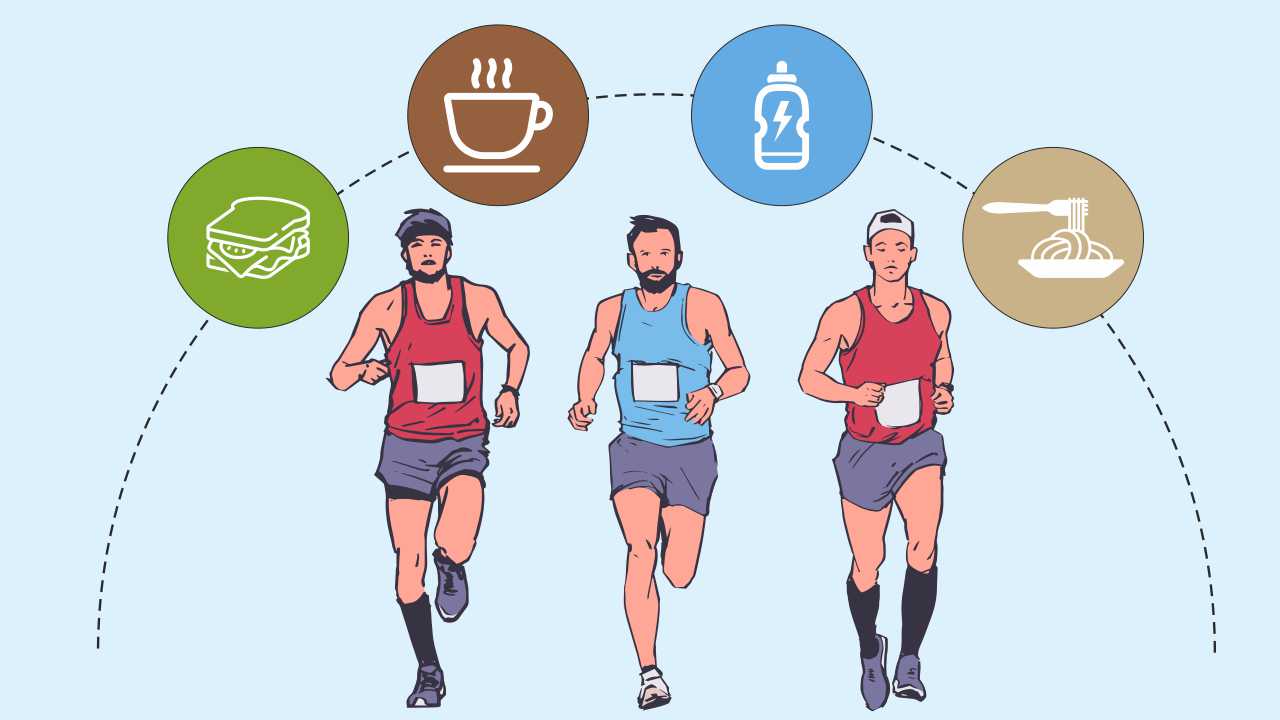
How to Calculate Macros for the Perfect Fitness Goal

If you are serious about pursuing your fitness goals, you may have considered tracking the consumption of your macronutrients (macros) — that is, carbohydrates, proteins, and fats. Once you identify your specific health and fitness goals, figuring out the ideal intake of each of the three macronutrients is pretty simple. Before answering any questions that you may have in mind, such as what are the best macro percentages for muscle gain and how to calculate macros for weight loss, let us first understand the importance of all the macronutrients.
It is important to highlight that carbohydrates, proteins, and fats play essential roles in the human body. So, any diet that calls for the elimination or a dramatic reduction of any macronutrient is inherently unhealthy. For instance, carbohydrates are not only the body’s preferred source of immediate energy, but they are also stored as fuel for later use.
Protein forms the major structural component of muscle, as well as that of the brain, nervous system, blood, skin, and hair. It performs many functions in the body. It is the transport mechanism for iron, vitamins, minerals, fats, and oxygen within the body. Additionally, it aids in forming enzymes that speed chemical reactions and create antibodies that the body uses to fight infection.
Fat serves many critical functions in the body, including thermal insulation, protection of vital organs, cell structure, nerve transmission, vitamin absorption, hunger suppression, energy source and reserve, and hormone production. Moreover, certain fats like olive oil and salmon are heart-healthy and excellent sources of nutrients.
Carbohydrates and protein each provide 4 calories per gram, while fat is the most energy-dense of the macronutrients, providing 9 calories per gram.
Importance of goals while determining diet plans
Recommended eating plans vary according to different health and fitness goals. Many believe that if they eat less than 1600 calories per day, they will lose weight. While this may be true, paying attention to what you eat as opposed to only thinking about the quantity of food intake will drive better results, no matter what your goals are.
As per generally accepted guidelines, adults should derive 45% to 65% of calories from carbohydrates, 10% to 35% of calories from protein, and 20% to 35% of calories from fat
This range is understandably broad, and suggestions vary slightly for individuals aged under 18. Finding where your needs fall within those ranges may be the key to successfully achieving your goals.
Steps to calculate your macros
Your energy requirements vary depending on your recreational and occupational activities in addition to the number of calories you burn through physical activity. If you are interested in crunching the numbers, here is a step-by-step process:
1. Ascertain how many calories you want to eat per day. This depends on your current nutritional habits, goals, and preferences. It may be a good idea to use a calorie-counting app to find out how many calories you are currently eating and use that number to set a goal.
2. Determine your ideal macro ratio, acknowledging that this may shift a bit with time.
3. Multiply your total calories by the percentages for each macronutrient. So, if you plan to eat 2,000 calories per day, with 25% of those calories coming from protein, multiply 2,000 by 0.25 to determine that you need to consume 500 calories of protein per day.
4. Divide those calories by calories per gram for each macronutrient. For example, protein has 4 calories per gram. So, 500 calories equate to 125g of protein per day.
Let’s look at three scenarios and explore how the macronutrient requirements vary based on an individual’s goals and exercise program.
1. General fitness
Mohan is an active individual who has been exercising for 30 minutes five days per week. He is interested in improving his general fitness. Based on his present activity level and goals, Mohan can meet his nutritional needs by consuming 1,800 to 2,400 calories per day. Exercising five days per week for 30 minutes is considered a general fitness program. So, Mohan may consume a normal diet to meet his nutritional needs.
His carbohydrate requirements are on the low end of the guidelines at 45% to 55% of his caloric intake, which comes to 3g to 5g per kg of body weight per day. His protein needs are 15% to 20% of his caloric intake, which is equivalent to 0.8g to 1.2g per kg of body weight per day. Lastly, his fat needs are 25% to 35% of his caloric intake, which is 0.5g to 1.5g per kg of body weight per day. If Mohan is sticking to a 2,000 calorie/day diet, he might eat:
- Carbohydrates: 45% of calories (900 calories) per day; at 4 calories/gram, this equates to 225g of carbohydrates per day.
- Protein: 20% of calories (400) calories per day; at 4 calories/gram, this equates to 100g of protein per day.
- Fat: 35% of calories (700 calories) per day; at 9 calories/gram, this equates to around 78g of fat per day.
2. Athletic goals
Robert is an amateur athlete who has been performing a moderate- to a high-intensity exercise program. As per his regime, he exercises for two to three hours, five or six times per week. This schedule is for over six months, and he wants to improve his nutrition to optimize his results. Based on Robert’s goals and because of his increased training volume above general fitness levels, his carbohydrate needs are greater than those pursuing general fitness goals. So, he requires around 50% to 60% of his caloric intake, which is 5g to 8g per kg of body weight per day. His protein needs maybe 20% to 30% (on the higher range) of his caloric intake, which is 1.4g to 2g per kg of body weight per day. His fat requirements are approximately 20%-25% of his caloric intake, which is around 0.5g to 1g per kg of body weight per day. So, if Robert is consuming 2,600 calories/day, he might eat:
- Carbohydrates: Minimum 50% of calories (1,300 calories) per day; at 4 calories/gram, this equates to 325g of carbohydrate per day.
- Protein: Around 30% of calories (780 calories) per day; at 4 calories/gram, this equates to 190g of protein per day.
- Fat: At least 20% calories (520 calories) per day; at 9 calories/gram, this equates to around 58g of fat per day.
3. Weight loss
Sarita is trying to lose about 18kg and shed body fat by making changes to her diet and performing low-intensity physical activity. Her carbohydrate needs are 45% to 65% of her caloric intake, which comes to 3g to 5g per kg of body weight. Her protein requirements are 10% to 35% of her caloric intake, which is 0.8g to 1.2g per kg of body weight per day. Her fat needs are 20% to 35% of her caloric intake, which comes to 0.5g to 1.5g per kg of body weight per day. If Sarita is reducing her total daily calories from 2,100/day to 1,600 calories/day, she might eat:
- Carbohydrates: 45% of calories (720 calories) per day; at 4 calories/gram, this equates to 180g of carbohydrates per day.
- Protein: 30% of calories (480 calories) per day; at 4 calories/gram, this equates to 120g of protein per day.
- Fat: 25% of calories (400 calories) per day; at 9 calories/gram, this equates to around 44g of fat per day.
Calculating Your macros
It is going to take some trial and error to figure out your personalized macro targets and the best macro calculator. However, the good news is that most calorie-counting and fitness apps provide this as a built-in feature. You can check out the free macro calculator available on the fitpage app. It takes various aspects into account, including your height, weight, age, sex, physical activity level, and goal.
Remember, perfection should not be the goal. Trying to land exactly on your macros every day is a recipe for stress, anxiety, and probable failure. Instead, make it a point to progress and use your macros to learn more about yourself and your nutritional needs.
References
1. Kerksick CM, Wiborn CD, Roberts MD, et al. ISSN exercise and sports nutrition review update: Research & recommendations. J Int Soc Sports Nutr 2108; 15: 38.
2. McArdle W, Katch F, Katch V. Exercise Physiology: Nutrition, Energy, and Human Performance (8th ed.). Philadelphia: Lippincott, Williams & Wilkins, 2019.
3. U.S. Department of Agriculture. 2020-2025 Dietary Guidelines for Americans (9th ed.). 2020. www.dietaryguidelines.gov (accessed Jul 11, 2021).














